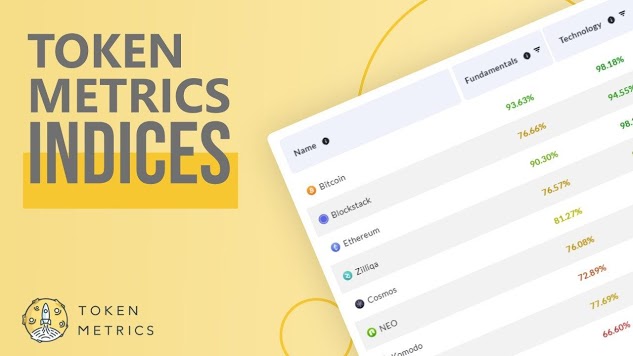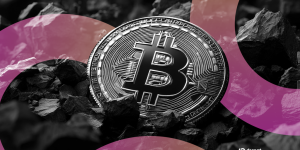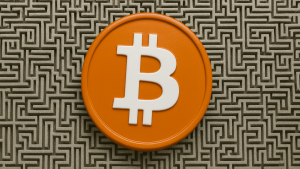How the Ethereum Merge Ends the Environmental Debate About NFTs
3 years ago CryptoExpert
In brief
NFTs have been widely criticized for their environmental impact, given the energy requirements of top NFT network Ethereum.
Ethereum’s upcoming merge is expected to cut the network’s energy use by over 99%.
One of the largest criticisms against NFTs will be rendered obsolete in just a matter of hours.
That’s because the environmental impact of Ethereum, the largest network for NFTs, will effectively be abolished after the blockchain completes the merge—its long-awaited transition to proof of stake. Once the upgrade is complete, the move will reduce Ethereum’s energy consumption by more than 99%, according to the Ethereum Foundation, citing data from one of crypto’s best-known environmental critics.
It’s a change that is sure to have considerable implications for Ethereum and the crypto industry as a whole—including NFTs.
“The merge structurally eliminates Ethereum’s energy requirements and carbon footprint,” Johnna Powell, who co-heads NFT efforts at software firm ConsenSys, told Decrypt. “Evolving the network’s approach to consensus ensures Ethereum can sustainably support the next generation of Web3 creators and developers.”
How did we get here?
At the moment, the Ethereum network is secured by a decentralized network of “miners” who run powerful computers that compete to solve complex cryptographic equations, earning ETH cryptocurrency rewards by creating new blocks and validating transactions.
This proof-of-work mining model is similar to that of Bitcoin, and the results of the math equations are ultimately irrelevant: they’re simply being performed so that miners are required to expend significant energy to solve them and win rewards. That process protects the Ethereum network and makes it very expensive for any party or group to try and take it over.
As Ethereum has grown from its 2015 launch and decentralized apps and use cases have gained steam, the drawbacks of that model have become more and more apparent.
In 2021, as network activity increased—partly, or arguably even largely, due to the explosion in popularity of NFTs—the value of ETH (which is necessary to conduct transactions) likewise increased. As the value of ETH increased, it thus became more profitable to mine. And as mining activity surged, so too did Ethereum’s energy consumption.
According to estimates from Digiconomist—a product of widely cited researcher and crypto critic Alex de Vries—the amount of annual collective energy used to secure Ethereum rose from just over 9 TWh at the start of 2021 to over 81 TWh at the end of the year. The number peaked at nearly 94 TWh this past May, and currently sits at nearly 80 TWh.
What does that mean? Digiconomist suggests that Ethereum’s decentralized network uses up as much electrical energy as the country of Chile in a given year, and has a carbon footprint comparable to all of Hong Kong.
When that network-wide energy tally is broken down per transaction, Digiconomist estimates that a single Ethereum transaction uses as much electrical energy as the average U.S. household does in an entire week. (Note that while the Ethereum Foundation cites Digiconomist’s network-wide estimates, it claims that per-transaction comparisons to rival blockchain networks can be misleadingly framed.)
As pictures of Apes traded for millions of dollars and brands flocked into the NFT space last year, Ethereum’s environmental impact quickly became a top talking point among critics.
Creators have faced environmental backlash, such as when Web2 digital art platform ArtStation tried to get into NFTs, or when the makers of the Dune movie—based on a classic ecological allegory—attempted to launch NFT tie-ins before scrapping the plans. Even outside of specific examples, most prominent NFT projects have faced complaints of “killing the planet.”
Ethereum dominates overall NFT trading volume, and it’s where most of the highest-value projects live—but there are rival platforms like Solana and Flow that use much less energy. Meanwhile, Ethereum layer-2 scaling networks like Polygon and Immutable X use tech like sidechains and rollups and don’t constantly interact with Ethereum’s power-hungry mainnet.
Nearly all of that nuance is lost when engaging with NFT skeptics, many of whom equate any use of NFTs—that is, blockchain tokens that represent ownership in an item—to wasteful poisoning of the earth, even when a more energy-efficient blockchain is used.
In other words, because Ethereum has become synonymous with NFTs, and because Ethereum’s network is such an energy hog, many people think that all NFTs are significantly impacting the environment. It’s likely why some brands refuse to use “NFT” terminology—even when selling NFTs and minting them on more eco-friendly blockchain networks.
The merge nears
Change is nearly here. The merge is the name for Ethereum’s long-in-the-works transition to a proof-of-stake consensus model, which means that mining will now be permanently eliminated. Instead, the network will be secured by high-value ETH holders that stake (i.e. pledge) their coins on the network and are then incentivized to validate legitimate transactions.
According to the Ethereum Foundation, the change will immediately result in a 99.95% drop in Ethereum energy consumption. Digiconomist similarly projects a 99.98% decrease in energy usage. They’re estimates, true, but they line up with examples of proof-of-stake networks that are already thriving in the NFT and crypto world.
In February, Deloitte Canada released a report in February that claimed that the Flow blockchain network—which powers NBA Top Shot and other collectibles platforms—used just 0.18 GWh of energy across all of 2021. When split between all transactions on the network, Flow claims that minting an NFT demands less energy than a single Google search.
The report pegged Solana’s annual usage at about 11 GWh, meanwhile—still a fraction of Ethereum’s current estimated toll. Meanwhile, the Solana Foundation claims that when that energy footprint is broken down, a single Solana transaction requires about as much energy as 2.5 Google searches… and 99.99% less energy than a single Ethereum transaction.
Meanwhile, Polygon’s own study suggests that its proof-of-stake sidechain validators use just 0.00079TWh annually compared to about 80 TWh on Ethereum. Granted, Polygon still taps the Ethereum mainnet to commit proof of its transactions—but even so, a single transaction via Polygon requires a fraction of the energy as a comparable transaction done only on Ethereum.
That caveat will also disappear with the merge, just like it will for other Ethereum scaling networks like Immutable X and Arbitrum that run more energy-efficient chains that still ultimately roll up to Ethereum’s mainnet. The entire Ethereum ecosystem will benefit in that way.
More broadly, the entire NFT ecosystem should benefit from Ethereum’s merge by effectively eliminating one of the most prominent—and arguably, most reasonable—arguments against using blockchain tokens to represent digital ownership of things like artwork, avatars, collectibles, and interactive video game items.
With Ethereum ditching its prohibitively energy-hungry mining model, no significant NFT network will use proof-of-work or any substantially similar model. There are NFTs on Stacks, a network that rolls up transactions on its own energy-efficient blockchain and commits them to Bitcoin’s proof-of-work network—but it produces very little activity.
There is one wildcard in the mix, however: some Ethereum miners, apparently upset about the merge cutting them out of the equation, plan to launch a forked version of Ethereum called EthereumPoW that still uses proof-of-work mining. Because it’ll be a copy of the Ethereum network as it stands before the merge, the fork will create duplicate versions of Ethereum’s NFTs.
However, sentiment among Ethereum NFT creators is overwhelmingly in favor of the merge and the proof-of-stake network, as Decrypt recently detailed. There may be some initial market action around the duplicated NFTs, but few expect EthereumPoW to find a significant, ongoing base of users and NFT collectors.
How it’ll help
One of the biggest winners in the potential perception shift may be NFT games. Many video game fans have been outwardly hostile towards NFT gaming projects and their creators, leading some projects to be canceled following backlash—including NFT projects from the developers of games like S.T.A.L.K.E.R. 2 and Worms.
Gamers have an array of complaints around NFTs, including the prevalence of scams and belief that publishers will use them to try and extract more value from players.
However, the environmental critique never really fit NFT gaming, as most of the major games in the Ethereum ecosystem—from Axie Infinity to The Sandbox and Sorare—use scaling tech to drastically cut down energy consumption. Meanwhile, many other notable projects use energy-efficient chains, like Ubisoft’s in-game NFTs running on the proof-of-stake Tezos.
But the impact should be felt more widely than just in gaming as the environment-killing argument loses footing. Ethereum still faces challenges ahead in scaling to accommodate larger volumes of transactions and cut down on skyrocketing gas fees, but the apparent lack of a huge energy footprint could ease some concerns around the network and NFTs on the whole.
Eric Diep, co-founder of Ethereum smart contract startup Manifold—which has worked with an array of prominent creators to power NFT projects—told Decrypt that proof-of-work mining is one of the key factors that has “sidelined a massive amount of potential value and creative energy from contributing to the Ethereum ecosystem.”
“Assuming proof-of-stake puts to rest environmental concerns of NFT production,” he added, “I believe the merge will unlock a massive amount of creative potential energy on Ethereum, and in the NFT creator community at large.”
Making the largest NFT platform dramatically more eco-friendly isn’t going to automatically convince critics, of course. There are still misconceptions around NFTs and how they work, not to mention concern about rampant speculation and scams. Even if skeptics believe that NFTs are broadly eco-friendlier than before, the backlash could continue.
“These narratives are coming from an extremely charged place,” said Furqan Rydhan, co-founder and CEO of Web3 development platform, Thirdweb. “I expect the critics of Web3 and NFTs to drop the environmental issue and focus on their other talking points.”
Skeptics and supporters may still widely disagree on the value of NFTs and digital ownership, but the environmental issue was a tough one for even avid Web3 fans to defend. After years of waiting, the merge should all but eliminate Ethereum’s sizable energy requirements—and clear one of the largest hurdles to mainstream adoption of NFTs.












